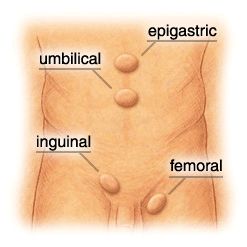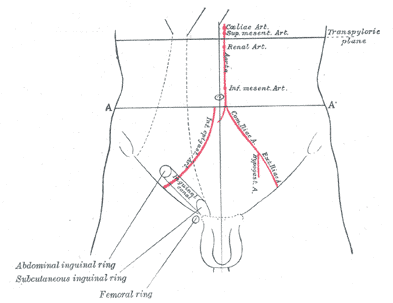Many people who have had hernia surgery may not have herad of Inguinodynia, but it’s something everyone should be aware of prior to surgery, and especially afterwards.
So what is Inguinodynia? Inguinodynia is pain or discomfort suffered by a patient more than 3 months after surgery. Most people suffer from inguinodynia after hernia repair surgery using mesh – no matter if the surgery is laparoscopic or open. The pain is felt in the inguinal canal, around the groin area in males and females.
What Is The Inguinal Canal?
The inguinal canal is a ligament existing in both sexes with an internal and external inguinal ring. The technical definition is that the canals are two passages in the anterior abdominal wall.
In men these convey the spermatic cords, and in women they’re the round ligament of the uterus (where the uterus and fallopian tubes meet).
Men have larger and more prominent inguinal canals. Think of them as tubes running from the hip area to the groin above the folds of the upper thigh. These inguinal ligaments contain blood vessels, lymphatic vessels, and an ilioinguinal nerve (entering the canal through the side instead of through the deep ring).
How Common is Inguinodynia?
According to an article published recently in the World Journal of Gastroenterology, chronic inguinodynia is common following hernia repair, and is an oft under-reported problem. A few days of mild pain following hernia repair surgery is common and normal, but moderate to severe pain lasting more than three months is considered pathological, and needs to be reported to your doctor.
Why You Should Choose an Experienced Surgeon
In hernia repair surgery, the type of mesh used (as long as it’s not a discontinued or FDA banned mesh) is less of an issue than choosing the right surgeon and hospital. The skill of the surgeon is often what will determine if you will suffer chronic pain after surgery. A bad surgeon can choose a mesh that is too small for the site, which can cause pulls, tears, infection, and/or tension.
The Journal of Pain Research notes that there’s no common “algorithm” for hernia repair treatment, meaning that even though it’s a common surgery consistent outcomes have yet to be perfected. Most doctors hope to avoid the development of chronic inguinal pain – as it’s one of the most important clinical outcomes.

image credit
Treatment of Inguinodynia
There is no definitive treatment, and treatment is administered on a case by case basis. The approach is often a multidisciplinary management of the complex problem using medical, pharmacological, surgical management, and more. Some treatments can include nerve blockers (diagnostic ablation, where an anesthetist numbs a specific nerve using Lidocaine or Bupivacaine), and pulse radiation to ease symptoms; nerve blockers only last a few hours and wear off quickly. Often the best way to treat chronic pain is to have another repair with an experienced surgeon, but do not take action before talking to a medical professional and your attorney.
What Causes Inguinodynia?
If you have any of the following symptoms, you must see a medical professional immediately. The main reason for chronic pain is damage to the inguinal nerve or another non-neuropathic causes (pain not caused as a result of nerve damage) due to mesh or other related factors.
The cause of inguinodynia from hernia mesh surgery is due to one or more of the following:
- Breach of surgical technique
- Poor mesh placement
- Mesh shrinkage
- Nerve entrapment
- Osteitis pubis (non infectious inflammation of the pubic muscles)
- Loss of domain (more tissue is outside than inside)
- Compromise of spermatic cord
- Inappropriate tack placement laproscopically or suture placement in open technique
- Scar response
- Concrete-like mass developed after plug repair
- Idiosyncratic response to mesh implantation
- Post-op infection, sinus formation, or fistulaztion
- Infected mesh-toxic shock syndrome
- Gynecological causes
- Inflammatory or IBS disorder
- And other unknown causes
Symptoms Checklist of Inguinodynia
The symptoms are complex but can include any or all of these:
- Dull aches in the groin area
- Chronic pain
- Sharp shooting pain along the distribution of the inguinal nerves
- Trouble walking or sitting
- Trouble sleeping as a result of the pain
What to do next?
- Talk to your doctor.
- See if you need to have additional surgery or alternative treatment options.
- Speak with an experienced personal injury attorney.
Discuss your case with Coxwell & Associates PLLC today.
At Coxwell & Associates, we have over 35 years of experience dealing with personal injury cases, and we specialize in hernia mesh cases. Give us a call or email today. Click below for more information.
Disclaimer: This blog is intended as general information purposes only, and is not a substitute for legal advice. Anyone with a legal problem should consult a lawyer immediately.

